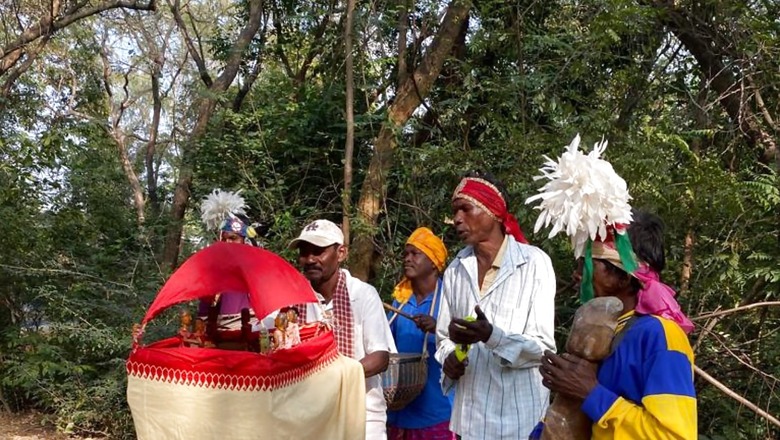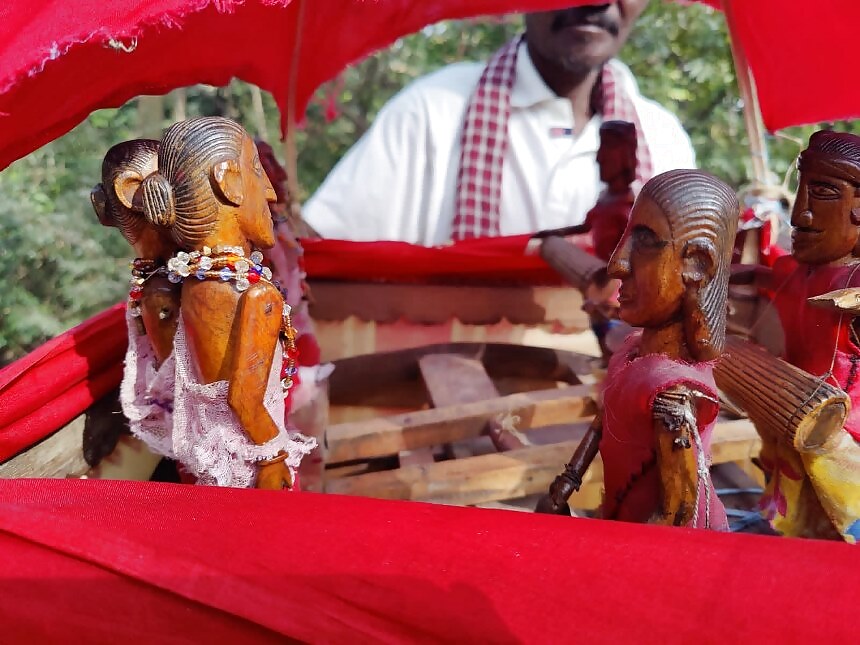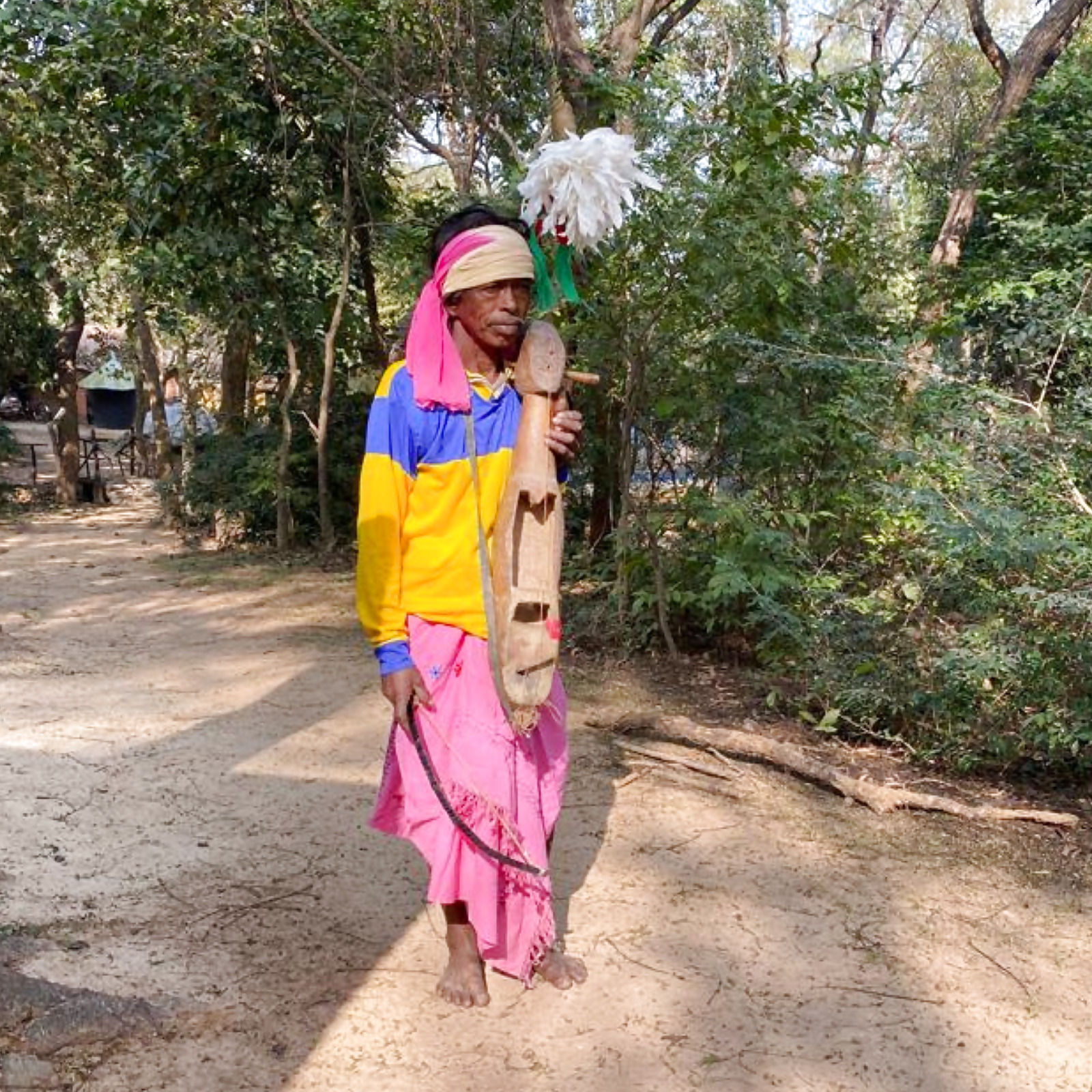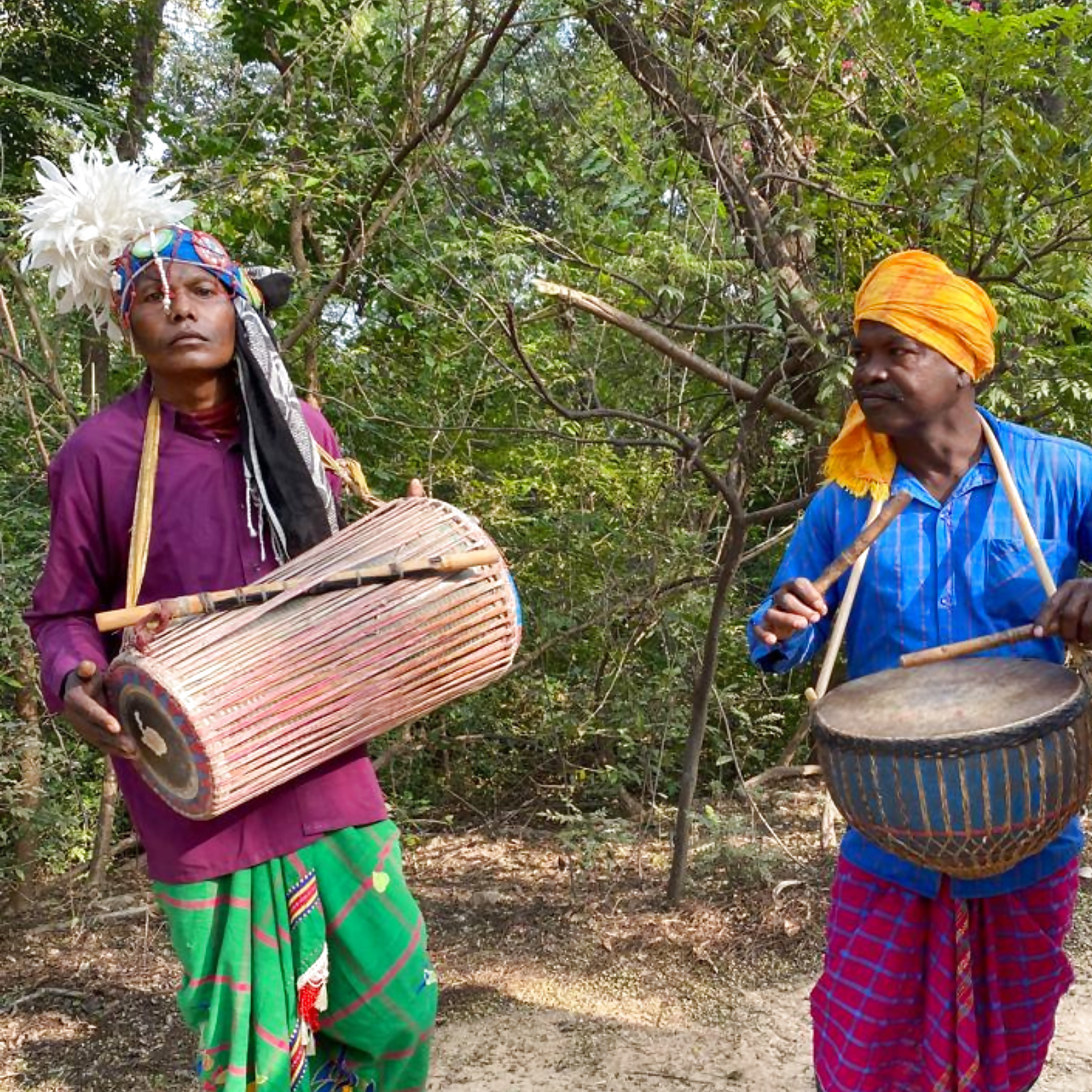
views
Chadar Badar, an ancient form of Santhal puppetry, is almost on the verge of extinction, as the proponents of the art form in West Bengal fail to teach the nuances of it to the younger generations of their community because of its economic unviability.
The artform, previously used to be performed by the Santhal population in various parts of India such as Assam, Odisha and Bihar, was mostly practiced in the states of Jharkhand and West Bengal.
Shukul Murmu (56), who claims that his group currently is the only one practicing the art form in West Bengal for a living, believes that the youth section of the Santhal community is reluctant to learn about it because of the lack of revenue that it has to offer.
Murmu’s group that includes four other people, Churko Tudu (75), Bhairab Murmu (52), Khandu Maddi (42) and Rashik Tudu (49) only started practicing professionally after Matal Murmu, who they address as their “Gurudev” (teacher) passed on the baton to them in a ceremony held on the seventh day of Dashain some odd twenty years ago.
Matal Murmu who had learnt the tricks of the trade from the Santhal community in Jharkhand only chose the five of them from the entire community in Bolpur to carry forward this tradition.
In the last few years, the group has only been able to perform twice in Kolkata, once in a small village in Maharashtra (that none of them remember the name of), Delhi and Bhutan. The group is of the belief that they hardly get any shows because people are still not aware of the existence of such an art form.
Every once in a while they are called to melas such as the Sriniketan Utsav, which is popularly known as Magh Mela, where they are paid a meagre sum of Rs 2,000 for a group of five people for performing for more than two hours.
The Sriniketan Utsav or Magh Mela is held every year between February 6-8 to mark the foundation day of Srinekatan, which was started by Rabindranath Tagore to promote folk culture and different rural activities.
Their set-up includes the puppets that were crafted by their ‘Gurudev’ Matal Murmu more than fifty years back using mahogany wood. The uniqueness of the construction of the stage makes it extremely distinct — it is a composite and portable set that contains the figurines as well as the props.

However, what is extremely unfortunate is that nobody in the community knows how to make these dolls any longer. These dolls play an integral part in their skits and considering the very little that they earn they cannot even imagine buying the wood to try and learn how to make these dolls.
Three of the four instruments that they use while performing are handmade by them — Tunda, Tamac and Banam. While ‘Tamak’ is a stick-struck double-headed drum that the Santhal community uses, the body of the instrument is made from leather and metal.

On the other hand, ‘Banam’ is a more rustic version of a violin and the history of this instrument can be traced back to the Bengali folktale of “Sath Bhai Champa” — they believe that young Champa’s soul is stuck inside the Banam and thus they refer to the instrument as their “bon” meaning sister.
They sing songs that are steeped in contemporary issues such as religious bigotism.

The group is now trying to find young kids from within the community who would want to learn the art but the issue that they are facing is that the parents of these kids are hesitant into pushing their children into it considering one cannot make a living out of this profession.
“We want these children to learn so that we can make sure that something so integral to our culture does not die due to the lack of money and opportunities,” says Shukul.
Churko is 75 and has now spent most of his life practicing the art form claims, “I have been happy in life only because I have lived it musically. But sometimes I do feel bad about not being able to give my family a good life, that’s the only regret I have.”
These men were forced to start farming in order to sustain themselves and their families. “We do not mind working in someone else’s farm, eating rice once a day but we are going to continue working hard so that we can also keep doing what we love, that is Chadar Badar” Rashik says.
The children in their families were unable to continue their studies post-pandemic after the government schools shut down because they could not afford to buy smartphones or continuously pay for internet packages.
Bhairab recalls how he lost his mother during the second wave of Covid-19 because he could not afford her treatment, “I did not even have enough money to pay for the van fare but once I arranged for that, I realized I did not have enough money to pay for her medication,” he says.
The group is certain that the government does not know about their existence because they are sure that had they known about the art and the artists, they would have received a little more recognition.
Aaditto Shen, who has been closely working with the Santhal community for the last 18 years, feels that “there is no realistic way to help this group or any Rural art community for that matter.”
“One can ‘help’ them in the short term by dolling out alms to them, maybe. So that they can survive for now physically,” believes Aaditto.
In 2020, the block development officer of their village in the interiors of Bolpur had promised to give them certificates after all these years for their dedication towards their art but that too got postponed due to the lockdown and they still have not received it.
Last year, the Illambazar Krishak Bazaar, a farmer’s corporation, gave them one thousand rupees along with some alms, but that does not seem enough to motivate them again to commit to their art full time or attract the youth to participate in the preservation of their art and culture.
Shukul Murmu is hopeful that before they stop performing because of old age, they can pass it down to a few others because “Chadar Badar is not just an Adivasi art form but is also an extremely important tool to spread social messages within their community.”
Read all the Latest News, Breaking News, watch Top Videos and Live TV here.




















Comments
0 comment